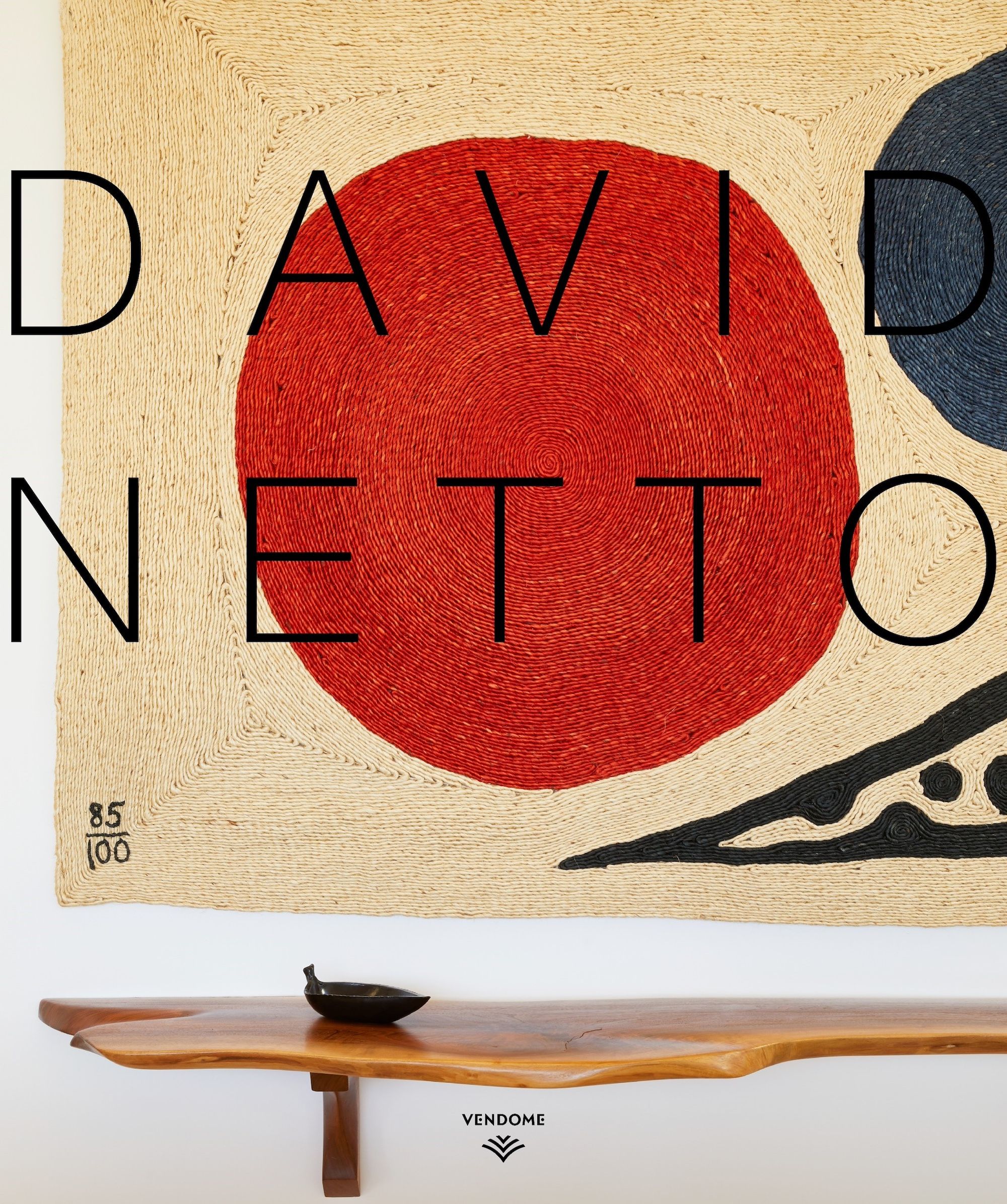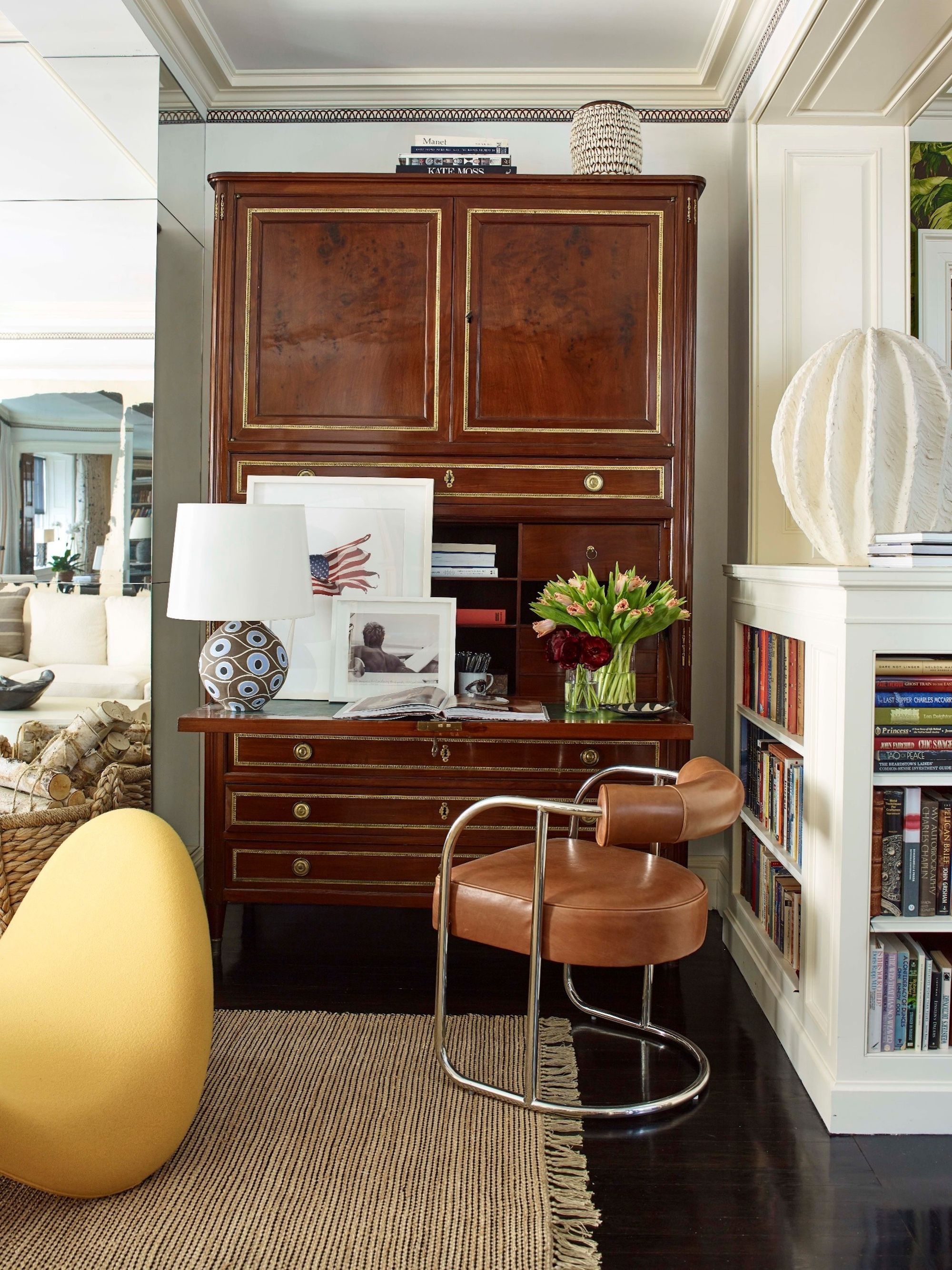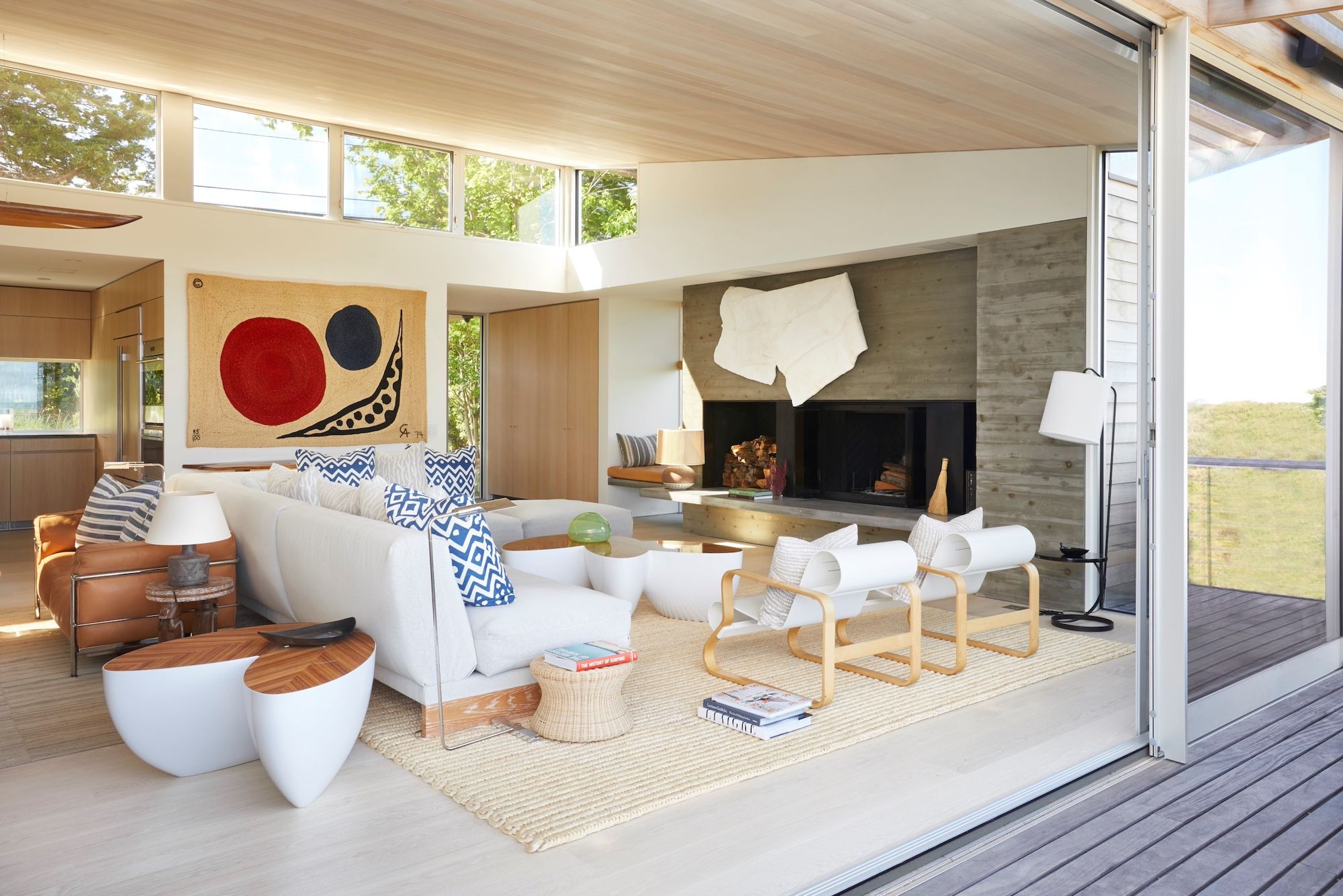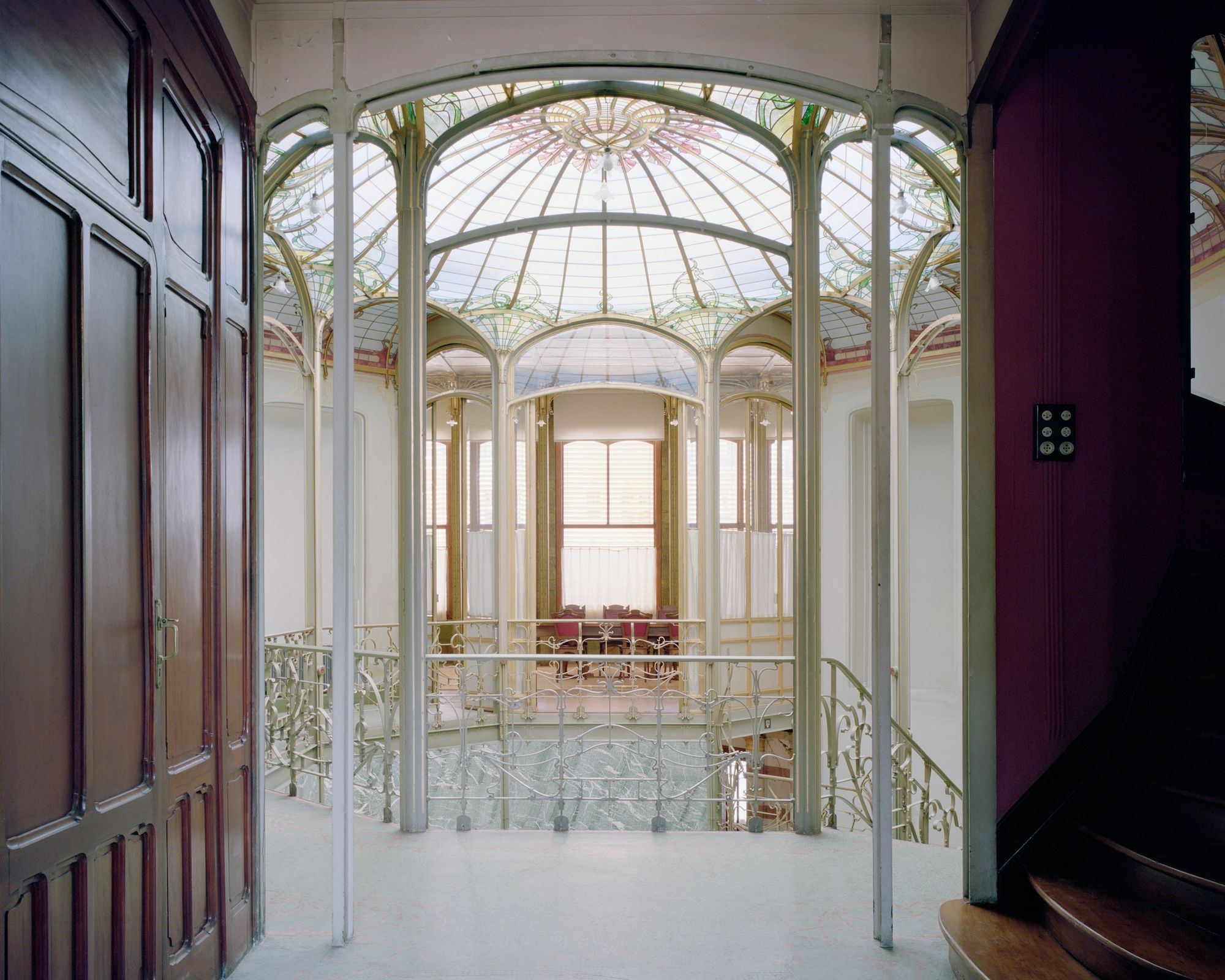DESIGN LEGENDS APRIL 23 2024
by Daniella Ohad
Daniella Ohad recaps her weekly conversations with the legends of interior design

DAVID NETTO/ LIVING ROOM IN AN UPPER EAST SIDE APARTMENT, FEATURING TONGUE CHAIRS BY PIERRE PAULIN AND BRANCHES MIRROR BY HERVÉ VAN DER STRAETEN
Photo © Francesco Lagnese; courtesy of David Netto Design
Comprising one-on-one interviews with international design talents, Interior Design: Then and Now is a Spring 2024 webinar program hosted by Daniella Ohad for Christie’s Education. For the Design Miami/ Forum, Ohad recaps each interview. Read on for highlights from her conversation with LA-based interior designer and editor David Netto.

DAVID NETTO/ LIVING ROOM IN A SOUTHAMPTON HOME, FEATURING A PAIR OF ELEPHANT ARMCHAIRS CREATED BY JEAN-MICHEL FRANK FOR THE LLAO LLAO HOTEL IN PATAGONIA IN 1939
Photo © Pieter Estersohn; courtesy of David Netto Design
In the landscape of American interior design, David Netto is known as a true connoisseur. Rather than formulate his work around a particular style, he has cultivated a sweeping expertise in art, design, and architecture history along with a keen eye for historic buildings in the real estate market. Such deep knowledge allows him to approach his projects each as a world unto itself, sensitively blending historic and contemporary collectible design and decorative arts to achieve sophisticated yet livable spaces.
Netto’s erudition also feeds his successful career as a book author and contributing editor for publications like Town & Country, Wall Street Journal, New York Times, and Cabana. As my recent Interior Design: Then and Now guest, he discussed his latest publication, a self-titled monograph spotlighting 20 of his most paradigmatic interior designs from the last two decades, and along the way reflected on taste, passion, and what makes a home great.


INTERIOR DESIGNER AND EDITOR DAVID NETTO ALONGSIDE THE COVER OF HIS NEW MONOGRAPH, PUBLISHED BY VENDOME PRESS IN 2023
Photos © David Netto Design and © Vendome Press
Netto and I first met nearly ten years ago, when we were invited to participate in a Design Miami Design Talk on the subject of collecting, connoisseurship, and our respective experiences living and working with design. I was thrilled to have the opportunity to catch up with him and learn more about his journey and vision, which, he revealed, is rooted in his experience as a child of New York City.
Architecture piqued Netto’s interest at an early age. In the 1970s, during summers spent in East Hampton—before privacy hedges became the norm—he would ride his bicycle around and contemplate the historic architectural gems of this former artist-colony town. Here, he discovered the emotive quality of beautiful homes. A decade later, as Manhattan nurtured a youth-led creative renaissance, Netto discovered the exhilarating power of interiors on the dance floor of the legendary Palladium nightclub, which was designed by Japanese starchitect Arata Isozaki and featured artworks by the likes of Jean-Michel Basquiat, Kenny Scharf, Keith Haring, and Francesco Clemente.
Netto went on to study architecture at the Harvard Graduate School of Design but dropped out when he realized that designing interiors held more fascination for him than designing their architectural envelopes. He founded his studio, David Netto Design, in 2000 and has since created some of the most intellectually-grounded yet visually dazzling residences in New York, California, and the UK. Today, his name can be found among the AD100 and Elle Décor A-List.

DAVID NETTO/ HOME IN AMAGANSETT, LONG ISLAND, FEATURING TRANSAT CHAIRS BY EILEEN GRAY
Photo © Rishad Mistri; courtesy of David Netto Design
When asked to characterize his practice, Netto said, “My job is to create stories that respect and complement the architecture.” Indeed, the layered stories that his interiors tell inspire his clients to fall in love over and over again with the homes he delivers for them. He has earned their trust, because he knows how to make the right investments in design masterpieces. The learning process is continuous, and he never wants to stop. This passionate approach draws clients who are already serious collectors—and frequently inspires other clients to become collectors. “My clients,” he told me, “come to me for my knowledge of history, but they also come to me for the optimism I insert in my interiors.”
Netto’s own home perfectly encapsulates his identity as a tastemaker, history enthusiast, and interior design professional. Built in the 1960s by pioneering Austrian-American architect Richard Neutra, Ohara House, as the home in LA’s Silver Lake neighborhood is called, embodies the dreamy, future-facing attitudes that defined postwar California living. Featured twice in Vogue, photographed by François Halard, the home is an important icon from the past but also offers Netto a comfortable environment for his family now.
Netto’s prolific portfolio is a testament to his talent for forging intriguing, nuanced dialogues between past and present; between the architectural envelope and the selection of furnishings; between sophistication and livability. Each element invites a closer look. Take for example an Upper East Side home he designed. A couple who “wanted to be young again” after their kids moved out commissioned Netto to convert their traditional, prewar apartment into a less-formal, downtown-style loft. Netto energized the interior with a revamped furniture program, mixing existing pieces with new, edgier acquisitions in daring colors. In Netto adept hands, a Louis XVI secretaire and 18th-century chairs live in harmony with a staid Albert Hadley sofa, Space Age Pierre Paulin lounges, and a whimsical Hervé Van der Straeten mirror.


DAVID NETTO/ LEFT: A HOME IN SOUTH KENSINGTON, LONDON, FEATURING 18TH-CENTURY ITALIAN CABINETS AND URNS FROM THE COLLECTION OF HENRI SAMUEL; RIGHT: UPPER EAST SIDE HOME, FEATURING A LOUIS XVI SECRETAIRE AND CHAIRS BY PIERRE PAULIN AND RALPH LAUREN
Photos © Simon Upton and © Francesco Lagnese; courtesy of David Netto Design
Netto’s most recent project, the Sutton Place home, is a duplex pied-à-terre at the Beekman Campanile on East 52nd Street, a historical building that has over the last century housed countless movie stars, aristocrats, and political figures, including Ralph Pulitzer Jr., Noël Coward, and Greta Garbo. The site epitomizes old New York and reminds Netto of his childhood—he learned to swim at the River Club Pool at the famed River House next door. When Netto first entered this landmark and saw the apartment’s magnificent view of the East River, he knew that the interior scheme needed to converse with the rich history of New York City.
Previously decorated by the legendary Mica Ertegun, the apartment was renovated by architect David Hottenroth. Netto recognized his challenge was to augment something that was already practically perfect. His furniture selection emphasized classics like Mies van der Rohe’s Brno dining chairs, alongside timeless contemporary pieces by Pierre Yovanovitch, Wendell Castle, and François Catroux. The owner raves about the layered stories that tie the pieces together.
Netto mentioned his tremendous respect for Catroux, the famous interior designer who passed away in 2020. Netto first wrote about him for the Wall Street Journal after spending a weekend with him and wife Betty, the former model and muse to both Yves Saint Laurent and Tom Ford, at their home in Côte d'Azur. Wanting to secure his hero's place in the canon, Netto published the first monograph dedicated to Catroux’s work in 2016. “He was the last to survive,” Netto noted, “from the circle around Saint Laurent,” notably creating homes for the Rothschilds, Diane von Furstenberg, Princess Firyal of Jordan, and more. At the auction of the Catroux collection in 2022, Netto acquired a few pieces, “to have him with me all the time.”

DAVID NETTO/ INTERIOR IN A HOME IN AMAGANSETT, LONG ISLAND, FEATURING A TAPESTRY BY ALEXANDER CALDER
Photo © Rishad Mistri; courtesy of David Netto Design
Much of Netto’s work is done in the Hamptons, a seaside community that he knows well and loves. Featured in his new book, a house he designed in Southampton proved to be another canvas for his remarkable connoisseurship. For this typical shingle-style mansion, he curated a series of intimate spaces, each filled with delightful surprises and rare, 20th-century design masterpieces—like a pair of consoles originally produced for the Maritime Pavilion at the 1939 World’s Fair and 1960s Klismos chairs by T.H. Robsjohn-Gibbings, inspired by the ancient Greek precedent. In the kitchen, Netto installed a wall of blue-and-white tiles designed by Gio Ponti for his Parco Dei Principi Hotel in Rome in the 1960s, and for the living room, a pair of Jean-Michel Frank chairs originally created for the Llao Llao Hotel in Patagonia in the 1930s.
Netto and I lingered over our discussion of this latter, momentous episode in design history, in the 1930s, when Frank, a French Jewish designer and distant cousin of Anne Frank, fled Paris as the Germans invaded. After landing in Argentina, Frank received several private and commercial commissions, of which the Llao Llao Hotel was his most significant. The resort burned down not long after it was completed. Amazingly, the chairs that Netto acquired from this iconic interior came complete with documentation.
Netto stressed that making a great interior and acquiring historical masterpieces does not necessarily cost more. But it does require time, dedication, and education. For Netto, this a lifelong vocation; he lamented that life is too short while there is so much to discover. Greatness also takes a daring spirit, with the vision to curate, layer, and juxtapose beyond the familiar conventions. This is Netto’s genius, which suffuses his work with poetry, intellect, and life.
To watch Ohad’s Interior Design: Then and Now webinar program live, register here.


